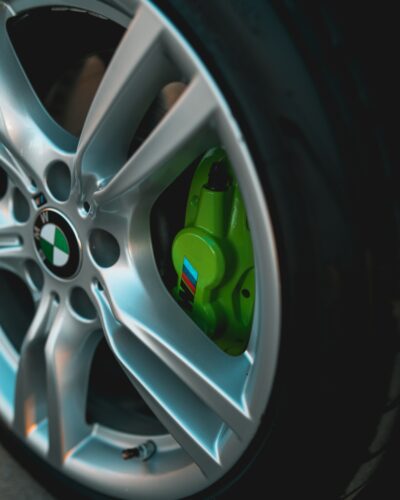San Leandro, CA – Auto Repair Shop Offers Brake Pad, Rotor, & Sensor Replacement
Posted in: Industry News
 Grinding or squeaking brakes are only one symptom of impending brake failure. Here are the others:
Grinding or squeaking brakes are only one symptom of impending brake failure. Here are the others:
- Brake warning lights that will turn on to notify you of a possible issue
- Pulsation or vibrating in the steering wheel or brake pedal
- Pulling to one side while braking
- Burning odor
- Should you encounter these, come in for service immediately.
Brake Inspections
You should arrange for a brake inspection with every other oil change, roughly once per year.
How Brakes Work
Brakes slow your car by compressing pads against rotors, disk-shaped parts attached to each wheel. Brake pads are positioned in calipers that wrap around each rotor. Calipers have pistons to transmit the force that presses the pads against the rotors.
Brake Fluid
Brake fluid transmits the force you generate when you step on the brakes to the calipers, and it necessitates a drain & fill at two-year intervals.
Brake fluid soaks up water from the air, causing rust and a lower boiling point. Water contamination makes brake fluid boil and brake fade more likely.
Wear Sensors
Your brake pads have metal backing plates to give them torsional stability. If you wait until the fiber part of your pads wear to the point that the metal backing plates contact the metal brake rotors, there will be insufficient friction to stop your car. Brake wear sensors came about because some drivers neglected to check their brakes until they became ineffective.
Modern brake pads have wear sensors included to warn drivers of this dangerous situation. There are two types of wear sensors, mechanical and electrical.
Metal Brake Wear Indicators
Metallic indicators are thin tabs extending toward the brake rotors at the pad’s wear limit. When the pad wears to its limit, the wear indicator contacts the rotor causing a noticeable squealing. The downside of this simple technology is that there are many reasons why brakes squeal. These mechanical wear sensors come attached to new replacement brake pads, so no additional labor is involved in replacing them.
Electric Brake Wear Indicators
Many European and high-end American & Asian cars have electric brake wear sensors. Electric sensors alert you to your brakes needing service by triggering a warning light on the instrument panel when the pads are at their wear limit. When the sensor contacts the metal rotor, it completes a circuit illuminating the warning light. Electric wear sensors are independent of the brake pads; we replace them separately.
As we are an independent shop, we need to alert you that the factory service department where you bought your car new will not replace brake parts under the factory warranty. These parts are considered wear items and are outside the scope of the warranty. We can beat dealer prices for a brake job. Call us or visit our website to see how much we can save you for brake repair or any service you require.
Return to: San Leandro, CA – Auto Repair Shop Offers Brake Pad, Rotor, & Sensor Replacement
Social Web